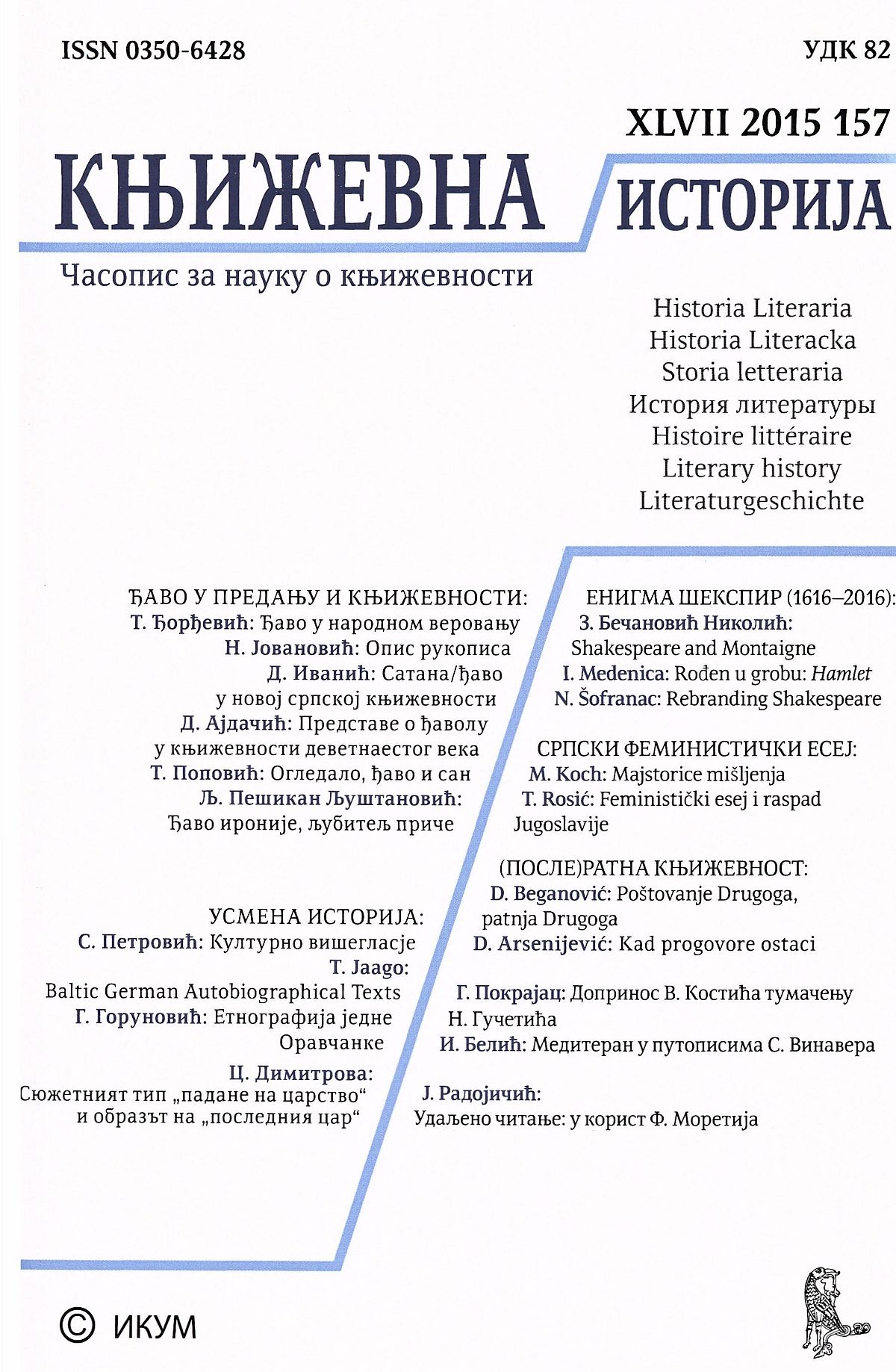Сатана/ђаво у новој српској књижевности (од барока до реализма и модерне)
Satan/Devil in Recent Serbian Literature (from Baroque to Realism and Modernism)
Author(s): Dušan IvanićSubject(s): Serbian Literature, Theory of Literature
Published by: Институт за књижевност и уметност
Keywords: Satan (Devil); Bible; genre; folklore; prometheization; poetics; transformation
Summary/Abstract: From the age of Dositej to the beginnings of the Serbian modernism, Satan/Devil moved from the biblical image to contemporary life and its hero, man. Staying true to biblical sources, during the inception of new Serbian literature, authors began to introduce Satan (the Devil) into new genres: dramatic allegories, religious epics and other similar forms. Under the influence of the ideas of rationalism and enlightenment, this tradition was slowly abandoned, with the Devil being replaced by morally diabolical traits of human characters. The role of Satan was restored with romanticist poetics: the act of rebellion as a form of fighting for freedom (both national and personal) against historic evil (Satan on the side of the rulers, empires, other religions and social classes); evil is identified as the “other” (ethically but also ethnically), and during this period shifts to personal features of humans/characters who posses satanic qualities. Along with the development of social and class interests, and the influence of folklore on the written literature, Satan and the satanic begin to appear in new light: in plots based on folklore (Glišić, Grčić Milenko), and social trends (Glišić). The increased interest in the human nature, the nature of evil in man and in the world, will all serve to broaden the anthropomorphization of the satanic, especially regarding dualistic ideas (S. Matavulj), all the while retaining the humour of the folk tradition as well as the ambivalent relationship the modern sensibility has with that tradition (Mileta Jakšić). It is only in the second half of the 20th century that the Satan is released from the narrative bounds of the biblical, folk and literary tradition in the Serbian literature, and begins an adventure of individualized (post)modern imagination (M. Pavić and others).
Journal: Књижевна историја
- Issue Year: 47/2015
- Issue No: 157
- Page Range: 53-74
- Page Count: 22
- Language: Serbian

